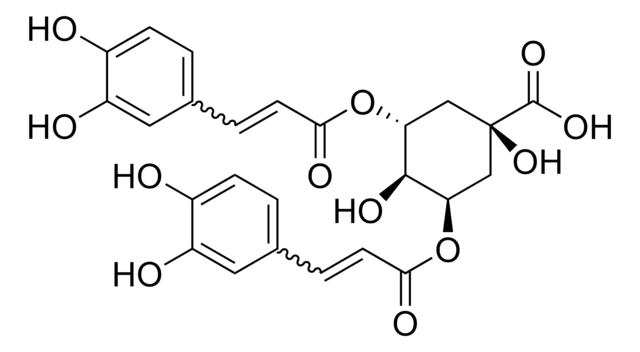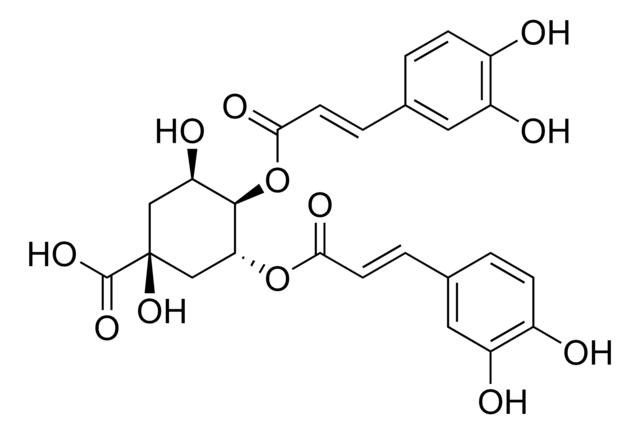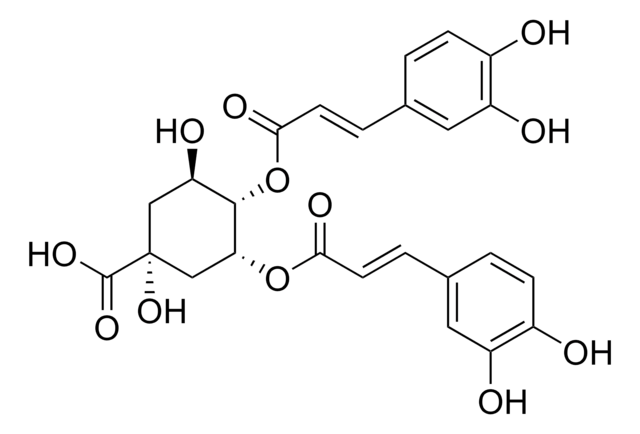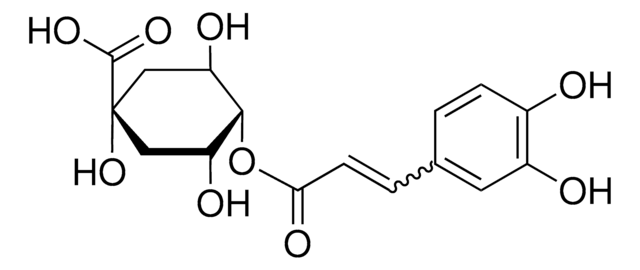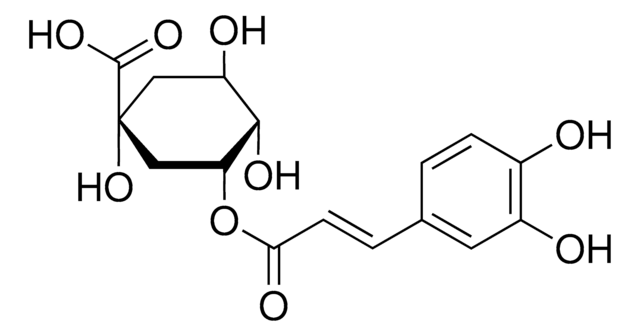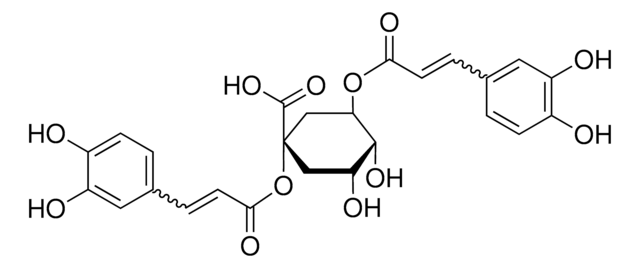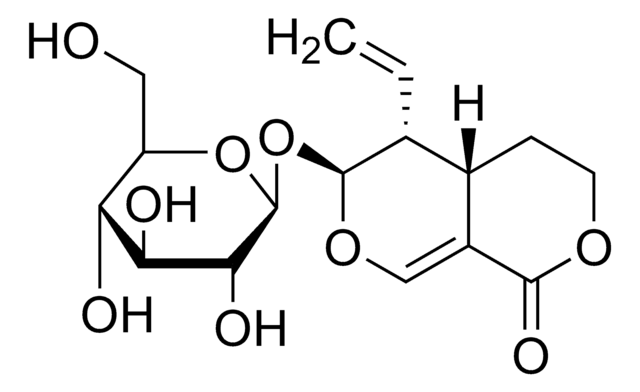SMB00224
3,4-Di-O-caffeoylquinic acid
≥90% (LC/MS-ELSD)
Synonyme(s) :
3,4-DICQA, 3,4-Di-O-caffeoylquinate, 3,4-Dicaffeoylquinic acid, Isochlorogenate B, Isochlorogenic acid B
About This Item
Produits recommandés
Pureté
≥90% (LC/MS-ELSD)
Forme
solid
Application(s)
metabolomics
vitamins, nutraceuticals, and natural products
Température de stockage
−20°C
Chaîne SMILES
O[C@@H]1C[C@](O)(C[C@@H](OC(=O)\C=C\c2ccc(O)c(O)c2)[C@@H]1OC(=O)\C=C\c3ccc(O)c(O)c3)C(O)=O
InChI
1S/C25H24O12/c26-15-5-1-13(9-17(15)28)3-7-21(31)36-20-12-25(35,24(33)34)11-19(30)23(20)37-22(32)8-4-14-2-6-16(27)18(29)10-14/h1-10,19-20,23,26-30,35H,11-12H2,(H,33,34)/b7-3+,8-4+/t19-,20-,23-,25+/m1/s1
Clé InChI
UFCLZKMFXSILNL-PSEXTPKNSA-N
Vous recherchez des produits similaires ? Visite Guide de comparaison des produits
Description générale
Application
- to quantify the caffeoylquinic acids of Artemisia frigida Willd. (Fringed sagewort) using high-performance liquid chromatography with diode array detection and electrospray ionization triple quadrupole mass spectrometric detection (HPLC-DAD-ESI-QQQ-MS)
- to quantify the phenolic compounds of Artemisia species using high-performance liquid chromatography with diode array detection (HPLC-DAD) technique
- for metabolic profiling of methanolic leaf extract of A. nallamalayana and to identify the phenolic acids using High-Performance Liquid Chromatography-Ultraviolet (HPLC-UV) analysis
Actions biochimiques/physiologiques
Code de la classe de stockage
11 - Combustible Solids
Classe de danger pour l'eau (WGK)
WGK 3
Point d'éclair (°F)
Not applicable
Point d'éclair (°C)
Not applicable
Certificats d'analyse (COA)
Recherchez un Certificats d'analyse (COA) en saisissant le numéro de lot du produit. Les numéros de lot figurent sur l'étiquette du produit après les mots "Lot" ou "Batch".
Déjà en possession de ce produit ?
Retrouvez la documentation relative aux produits que vous avez récemment achetés dans la Bibliothèque de documents.
Les clients ont également consulté
Notre équipe de scientifiques dispose d'une expérience dans tous les secteurs de la recherche, notamment en sciences de la vie, science des matériaux, synthèse chimique, chromatographie, analyse et dans de nombreux autres domaines..
Contacter notre Service technique